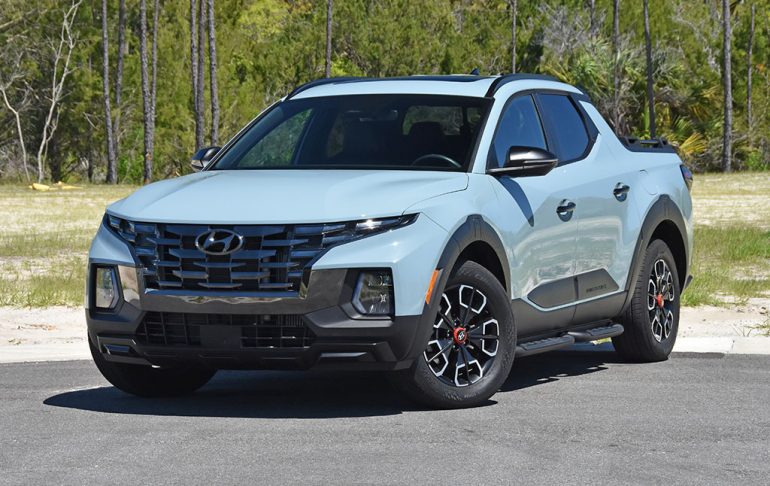
The Hyundai Santa Cruz, first introduced as a 2022 model year vehicle, helped to bring back an interesting segment for the compact truck. Embarking on a rather desolate path, the Santa Cruz, alongside the new Ford Maverick, captivated many by giving them a car-based truck that drives just like a car but adds some usable utility for hauling items in its smallish truck bed.
For the 2024 model year, the Hyundai Santa Cruz gets a little more rugged by way of a new XRT trim, which replaces the SEL Premium trim for the compact truck that has a unique flavor featuring dark exterior trim elements, 18-inch wheels with red center caps, wider finders, truck bed cargo rails, side steps, synthetic leather upholstery, auto-dimming rearview mirror, and adaptive cruise control.
Just like my last encounter with the Hyundai Santa Cruz, the XRT trim has a good ride quality that feels almost identical to its Hyundai Tucson counterpart. Much about the drivetrain of the Santa Cruz in its base form takes from the Tucson. However, when you opt for the Night, XRT, or the top-level Limited trim, you get the more powerful turbocharged 4-cylinder engine. That engine, which is a star within the scheme of performance vehicles in the Kia and Hyundai brand, is good for 281 horsepower and 311 lb-ft of torque in the Santa Cruz’s top 3 trim levels, one being my XRT test vehicle.
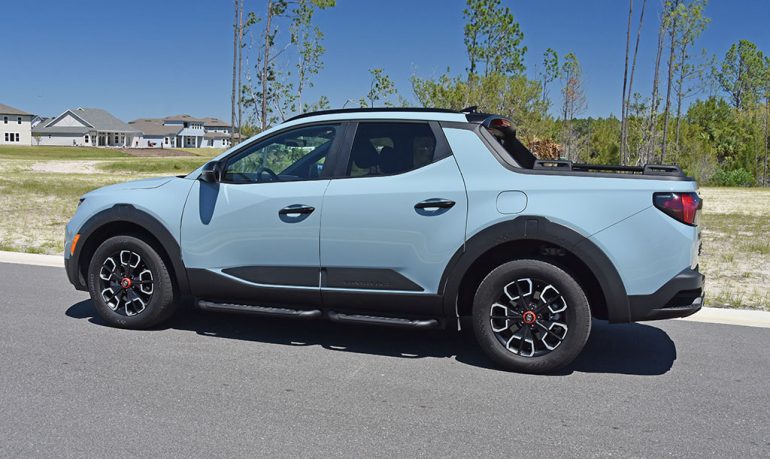
The power is strong and comes on after just a slight turbo lag out of the hole. Getting up to 60 mph takes just 6.4 seconds, and the Santa Cruz XRT’s ability to carry through corners and provide a compliant ride quality is excellent. There’s even a bit of fun factor to have in the Santa Cruz with such an engine. The only downside, apart from it not being as rugged off-road as I would have thought, is the clunkiness from the dual-clutch 8-speed automatic transmission. The transmission, utilizing an automated clutch, has rather snappy shifts but tends to be inconsistent about delivering power at low speeds, followed by the engine feeling like it is hanging onto higher RPMs when decelerating. You can feel the automated dual-clutch slipping its clutch at various times and attempting to smooth things out, but it coming up short. Otherwise, the Santa Cruz XRT is quite the performer out on the road and even on some light off-roading trails.
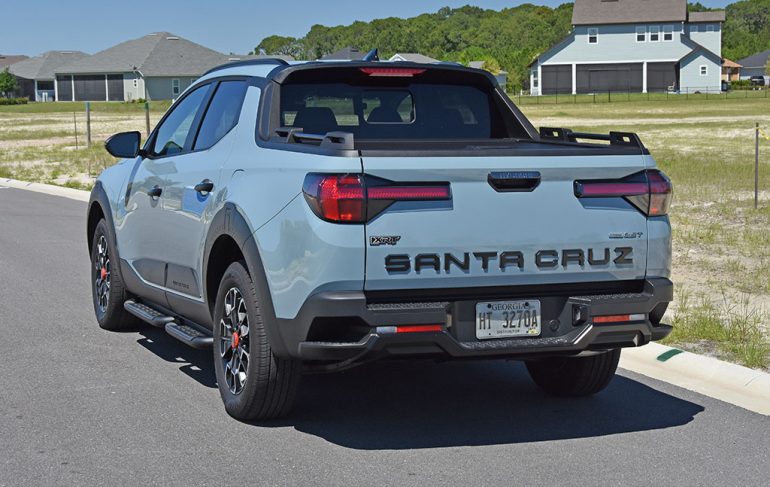
The capability of the Santa Cruz XRT is comparable to the new Ford Maverick with the ability to tow up to 5,000 pounds, but you’ll want to pair up a trailer brake controller, which isn’t available from the factory, leaving you to go aftermarket. You also have a maximum payload rating of 1,411 pounds, again proving that the compact truck segment isn’t necessarily a huge compromise.
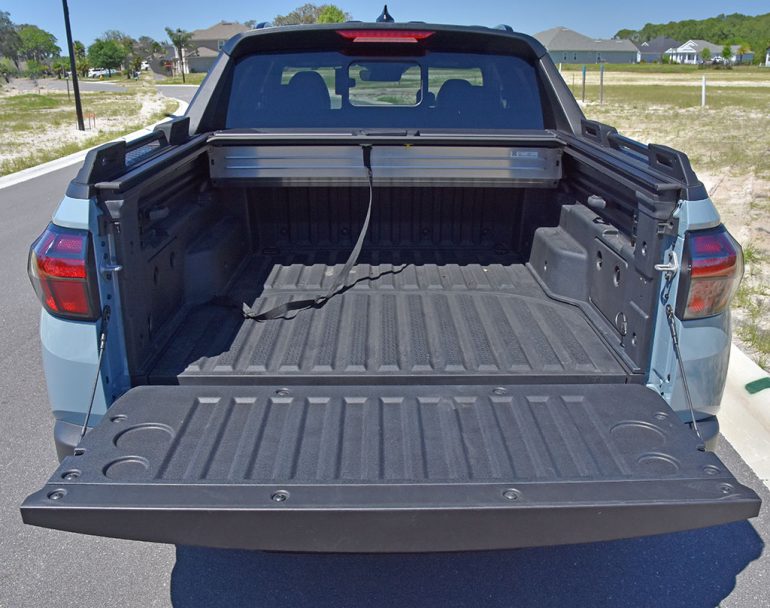
The Santa Cruz XRT only comes in its H-TRAC all-wheel-drive setup paired with the turbocharged engine, which returns 19 mpg city, 27 mpg highway, and 22 mpg combined. While those figures are obtainable in the real world from my experience, don’t expect to do anything past 27 mpg on the highway as that seemed to nearly be a stretch, often leaving me with 26.2 mpg unless I traveled around 65 mph for several miles hitting 27 mpg. The 17.7-gallon tank is big enough to get 477 miles out of a full load of regular unleaded on the highway.
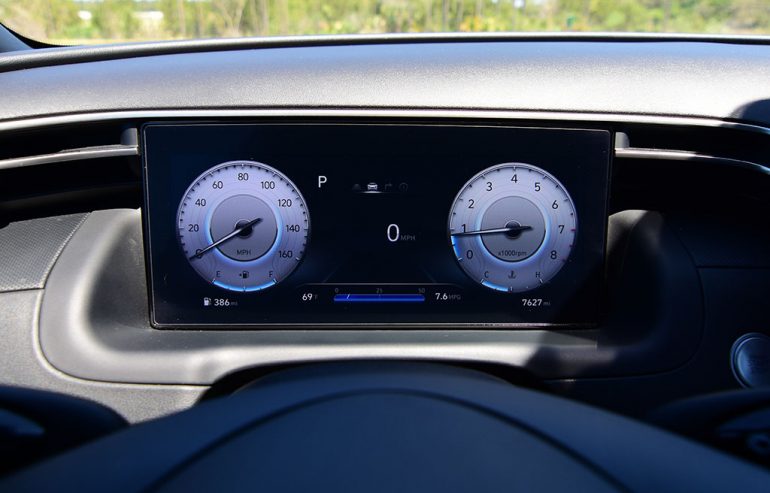
Having the Santa Cruz XRT trim, there are a good number of desirable features, such as heated front seats, automatic dimming rearview mirror, leather-wrapped steering wheel and shifter, adaptive cruise control, and all the unique elements of the XRT trim. Using the proven 10.25-inch infotainment touchscreen with its user-friendly setup is welcoming, as is the same-size digital gauge cluster. However, the control panel below the touchscreen is a full array of touch-capacitive buttons, which can be a love or hate thing, depending on your preference. Here, I would have liked to see a few physical turn knobs for the volume and station toggle instead of having all touch-capacitive buttons that often require several presses to make adjustments. Strangely enough, Apple CarPlay and Android Auto connect only through USB on the higher trims, even though you have a wireless smartphone charging pad.
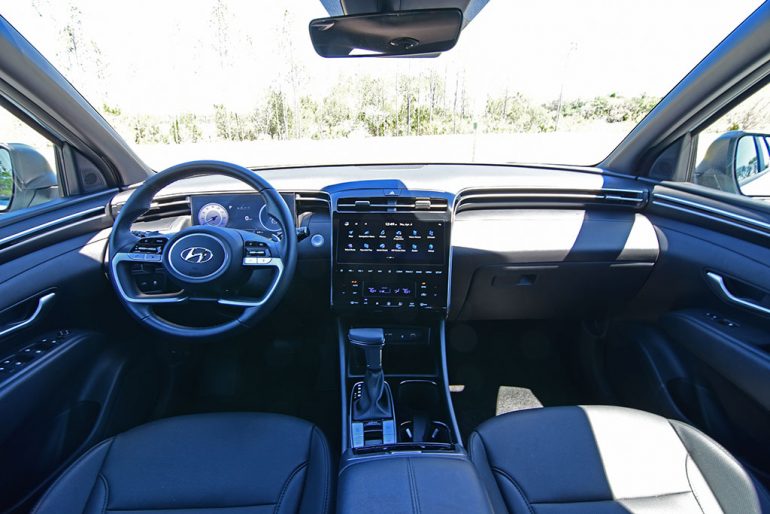
The seating areas are surprisingly roomy up front, just as you find in the nearly identical interior space of the Tucson. Where things differ is out back, where the seats seem somewhat shallow and flat, which cuts down on overall space for rear-seat passengers. This is where, hopefully, the truck bed makes up for that shortcoming to allow you to haul items without folding anything down. Speaking of folding, the Santa Cruz’s bed has a party trick of its in-bed trunk that’s sealed from the elements and has a nifty drain plug if you ever wish to wash it down or load it up to serve as a cooler. Also, the bed gets a convenient lockable sliding tonneau cover that comes standard on upper trim levels.

At the level of the Santa Cruz XRT trim, you get a bevy of active safety features, including the highlights of lane-keeping assistance, blind-spot intervention/warning, rear cross-traffic warning, forward collision mitigation/warning, and adaptive cruise control. What is missing from the XRT trim that you find in the Limited trim are a few features that include a 360-degree camera system, highway driving assist, and the trick blind-spot camera system.
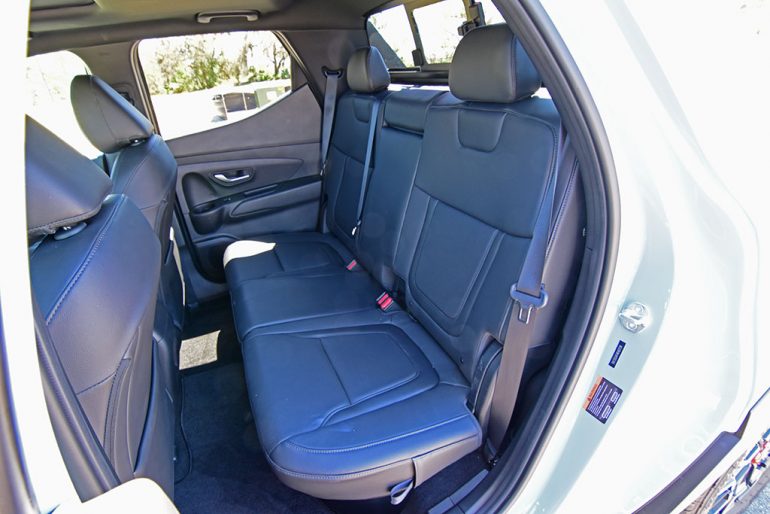
Keeping things interesting is the pricing for the compact Santa Cruz truck, which comes to $41,185, including a $1,335 inland and freight charge for my XRT trim test vehicle. Mind you, the Santa Cruz in its base SE trim starts at just $26,900 before any fees or options, making it an attractive package for those looking to get into a truck, even though it’s a compact truck.

Malcolm Hogan is the founder and editor of Automotive Addicts, a trusted voice in the automotive media world for over two decades. With 20+ years of hands-on experience covering the industry, Malcolm has built a reputation for delivering honest reviews, sharp insights, and in-depth coverage of everything from new car debuts to high-performance test drives. Passionate about the evolving car culture and staying ahead of the curve, Malcolm continues to lead Automotive Addicts as a go-to destination for enthusiasts and industry insiders alike.